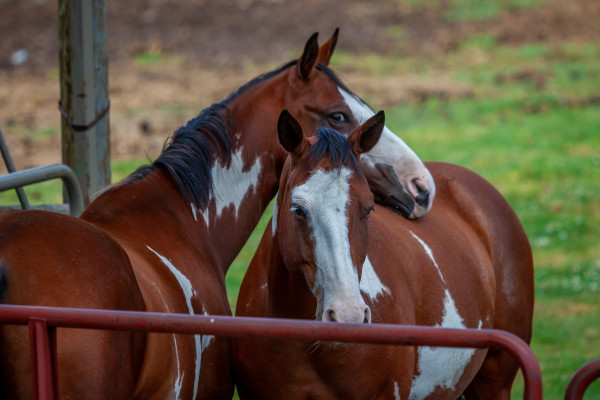Horses tend to be prone to various crusty skin conditions that, for the most part, are benign and self-limiting. In the sunny summer months, however, a crusty patch of skin can be the beginning of a serious case of photosensitivity, a painful reaction that causes skin irritation.

Primary photosensitivity typically occurs when a horse eats a plant that contains a photodynamic compound that reacts to the ultraviolet rays in sunlight. When these compounds circulate in the blood near the surface of unpigmented (pink) skin, the resulting chemical reaction damages tissue. In secondary photosensitivity, a horse’s damaged liver cannot filter out photodynamic compounds, leading to the same reaction. Plants that cause photosensitivity include alsike clover and Saint John’s wort.
Photosensitive reactions cause blistering of the skin, followed by the formation of tight thin scabs that peel away in a prolonged and painful process. This reaction can occur in pink skin anywhere on the body, so on a splashy pinto, it can involve a large portion of the body and make for a miserable horse.
Click here to read about eight summer health concerns to be alert for.
The earlier photosensitivity is identified, the better. At the first sign of crusting on white skin, check to see if the crusts stop where dark hair begins. If they don’t, chances are you’re dealing with some other skin condition. If the crusts are limited to white patches, however, call your veterinarian for advice on your next steps.
Typically, treatment for photosensitivity starts by taking the horse off all pasture that may contain alsike clover or other phototoxic plants and keeping him indoors, shielded from the sun, until his skin heals. What you don’t want to do is pick the scabs off the horse. Not only will this be painful, but it can lead to infections.
This article first appeared in EQUUS issue #454,
Don’t miss out! With the free weekly EQUUS newsletter, you’ll get the latest horse health information delivered right to your in basket! If you’re not already receiving the EQUUS newsletter, click here to sign up. It’s *free*!








